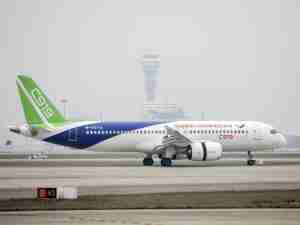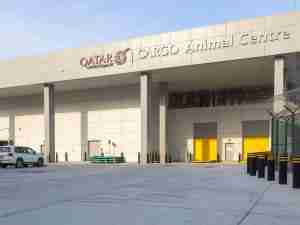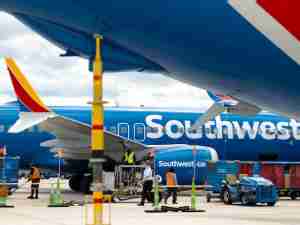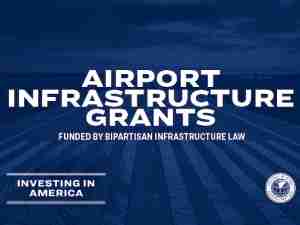IndiGo Owners Invoke United-Pan Am Deal to Justify Air India Bid
By: | Jul 06 2017 at 10:24 AM | Air Cargo
IndiGo, India’s biggest airline, is keen to start long-haul low-cost flights, as the carrier explores a fundamental change to its business model by looking to acquire international operations of state-run Air India Ltd.
“Air India’s international operations would bring a very important element to our network,” IndiGo’s billionaire co-founder Rahul Bhatia told analysts on a conference call to discuss the airline’s move to buy into the unprofitable and highly indebted carrier. “It will provide a rapid entry into restricted, and in some cases, closed international markets.”
Bhatia and fellow billionaire co-founder, Rakesh Gangwal, held the call to allay concerns after the company’s announcement to bid for Air India wiped out more than $500 million in market value for IndiGo, the nation’s most profitable airline. Surviving on a taxpayer bailout, Air India hasn’t made a profit for about a decade and has piled up debt of about 500 billion rupees ($7.7 billion).
IndiGo will gain access to Air India Ltd.’s routes and workers by buying the international operations, which would otherwise take a “long, long time” to replicate, Gangwal said. Even without a deal with Air India, IndiGo will look to start long-haul operations as it makes “fundamental economic sense,” Gangwal said.
Buying into inefficient businesses has a history of success, Gangwal said. It is “questionable” if United Airlines would have become one of the world’s largest airlines today if it hadn’t acquire Pan Am’s Pacific operations and London routes a few decades back, Bhatia said. American Airlines followed the same model in buying Trans World Airline’s London routes, providing a proven road-map for such an approach, he said.
Single Aircraft
IndiGo has long advocated a single-aircraft-type model to bring costs under check, and has ordered 530 of Airbus SE’s A320 family jets, becoming one of the world’s top customers for the Europe-based planemaker. Gulf carriers like Emirates Airline and Etihad Airways PJSC have captured a large share of the Indian traffic on transcontinental flights.
“IndiGo is a natural player to take advantage of the significant and lucrative international market opportunity that India offers,” Gangwal said. “It is about time that IndiGo enters the long-haul international market.”
A combination with Air India would help consolidate IndiGo’s position as the country’s biggest airline with a domestic market share of 54.2 percent and a total fleet of 283 registered planes. For a successful bid, IndiGo will have to buy out either the international, or the entire airline operations of Air India, without a partnership with the government, Gangwal and Bhatia told analysts.
Preliminary OK
An Indian ministerial panel gave preliminary approval on June 28 to sell the national flag carrier, reviving attempts by a previous government to dispose of the state asset that has strained public finances for decades. Though Prime Minister Narendra Modi’s administration is keen, it has yet to decide on the contours of the sale—especially the fate of the debt.
A committee had recommended privatizing the airline by possibly asking the buyer to absorb more than $3 billion of loans linked to aircraft purchases, a person with direct knowledge of the matter told Bloomberg last month.
The uncertainty over a potential deal structure will be a near-term overhang on IndiGo’s stock, Citigroup Inc. wrote in a note to clients June 29.
“If the deal does fructify, management will need to make significant efforts to replicate IndiGo’s operational efficiency at Air India, which will continue to be burdened by legacy issues,” Citigroup’s Mumbai-based analyst Arvind Sharma wrote in the note.
Operated by InterGlobe Aviation Ltd., IndiGo has made an annual profit since at least the year starting April 2009, compared with the combined $10 billion in losses for the Indian airline industry in about the same period.
Mixed Fleet
Another challenge IndiGo may face, if it manages to buy Air India, is having a mixed fleet. A potential buyout of Air India would throw Boeing Co.’s 737, 777, 747 and 787 jets in the mix.
Air India, which is known for its Maharajah brand icon, traces its roots to Tata Airlines, founded in the 1930s by the then-patriarch of Tata Group, J.R.D. Tata. A member of the global Star Alliance, it has rights to fly to and land in most of the global airports, as well as a trained workforce of 27,000.
Gangwal is a former chief executive officer of U.S. Airways, while Bhatia is a former travel agent. IndiGo has become India’s biggest airline in just a decade, luring customers with on-time performance, new aircraft, cheap fares and a tight grip on costs











